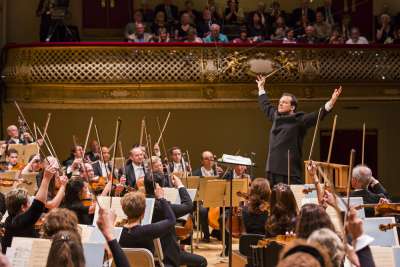Boston Symphony Orchestra, Week 15, 2016-17 Season: Hector Berlioz, Symphonie fantastique “Episode from the life of an artist,” Opus 14
Notes on the Notes on the Program
Berlioz: “I only knew him from his language lessons. I had no idea he was also a composer.”

The program notes, originally written by Berlioz himself, introduce this Symphony as follows: “A young musician of morbidly sensible temperament and fiery imagination poisons himself with opium in a fit of lovesick despair.” Is this about Berlioz? Or is he referring to another musician? Classicfm.com writes: “Berlioz himself loved a bit of opium,” so it could be Berlioz. But that website also claims that Chopin, a friend of Berlioz, “was rumored to regularly take the drug.” So he could be referring to Chopin. Also, I’m not ruling out Prince or Jim Morrison.
The five-part Symphony starts with reveries, a ball and a country visit, but ends with a hanging – the musician’s own – and a witches’ Sabbath. (Berlioz should have laid off the opium.) Leonard Bernstein called it the first musical excursion into psychedelia (19th Century Pink Floyd?). (Even without the phantasmagorical elements, his five–part work stretched boundaries, as most symphonies only had four. Crazy Man!) David Cairns, who translated Berlioz’s memoirs, wrote: “Berlioz in the ‘Fantastic’ symphony was speaking a new language.” He doesn’t say which; but the horns are French.
Writing to his collaborator, Berlioz gives this graphic description of the 4th movement: “In a fit of despair he poisons himself with opium; but instead of killing him the narcotic induces a horrific vision, in which he believes he has murdered the loved one, has been condemned to death, soiled his underwear and witnesses his own execution.” I added the underwear clause, but it seems plausible.
Still, it’s the killer fifth movement that pushes the envelope. Berlioz describes the musician as “surrounded by a hideous throng of demons and sorcerers, gathered to celebrate Sabbath night, while the woman “is nothing but a courtesan, fit to figure in the orgy.” Given these negative descriptions, it’s amazing that the Symphony was inspired by – and helped Berlioz woo – the Irish actress, Harriet Smithson (perhaps she had low self esteem). The young Berlioz fell in love with and courted her remotely (much like today’s young lovers, except without sexting or stalking). Their marriage lasted 11 years – presumably happy years, given that he spoke little English and she little French. (Their happy times probably ended as they learned each other’s language and at last knew what each other was saying… or she finally read his program notes.)
The Program’s photo of Berlioz shows a youngish, wide-eyed man with a sharp nose and full head of curly reddish hair. No Ryan Gosling; rather, a bit Dorian Grey – perhaps another reason Harriet left. (Or maybe he just lacked a “Magic Flute” … if you catch my drift.)
But let’s return to the unworldly torment of the fifth movement, and play it forward: If Berlioz were alive today, would his TV tastes veer towards Witches of East End, Supernatural, or The Walking Dead (and, if the last, would he follow it into spinoffs, like Fear the Walking Dead … or does his loyalty have limits)? Perhaps he would have composed theme songs for horror shows – the John Williams of SyFy. More likely he would have had his own heavy metal band, with a name like The Grateful Rolling Dead Hector Stones or Berlioz and the Jets (Buy My Language Lessons).
Berlioz wrote a sequel, the barely known Lelio, or the Return to Life, which represents the artist awakening from his opioid dreams and overcoming his despair at the realizations that he had lost his love, wasn’t the language tape guy, and would never play the bassoon, as he liked the sound (not of the instrument, but of the word “bassoon”).
In his lifetime Berlioz composed many other successful works, such as L’Enfance du Christ and Harold en Italie, but also several flops, such as D’adolescence du Christ and Harold y el Purple Crayon. His election to the Institut de France in the 1850s stabilized his finances, which enabled him to write the opera Beatrice et Benedict (a more marketable title than its original, Beatrice Mange Eggs Benedict).
- Passover Song Parodies - April 8, 2025
- My Interview With Isaac Asimov (a Memoir) - May 4, 2024
- Excerpts from Santa’s Tell-All Interview - December 26, 2023

